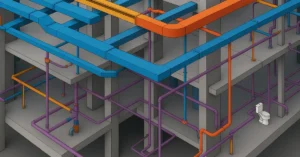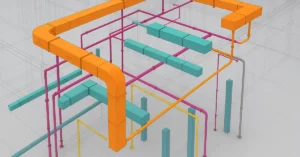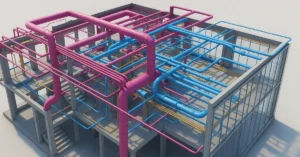A compelling exploration of Brutalist buildings in Edinburgh
When most people think of Edinburgh, they imagine Gothic spires, medieval closes, and Georgian elegance. But tucked among the city’s historic landmarks is a collection of striking, divisive, and sometimes misunderstood structures—the brutalist buildings in Edinburgh. These concrete giants, with their unapologetic aesthetics and monumental forms, offer a surprising counterpoint to the romantic image of Scotland’s capital.
Brutalism, often seen as raw and harsh, found fertile ground in post-war Edinburgh. In a time of reconstruction and modernisation, architects turned to concrete as a symbol of progress. This blog explores these structures in depth: their history, design principles, cultural value, and the ongoing debate about their place in the modern cityscape.
What Is Brutalism?
Brutalism emerged in the mid-20th century, inspired by Le Corbusier’s use of “béton brut” or raw concrete. The style prioritised functionality, honesty in materials, and large-scale geometric design. In Britain, it became synonymous with post-war public architecture, particularly housing estates, universities, and government buildings.
In Edinburgh, brutalism wasn’t just a style—it was a response to housing shortages, urban renewal pressures, and modernist ideals. The city became a canvas for architects experimenting with new forms, technologies, and urban planning philosophies.
Top Brutalist Buildings in Edinburgh
1. University of Edinburgh, Appleton Tower
Location: George Square, Edinburgh
Year Completed: 1966
Appleton Tower is one of the city’s most iconic brutalist buildings. Originally designed as part of a much larger development plan for the university, the tower stands tall with its exposed concrete façade, deep window recesses, and vertical emphasis. Although widely criticised for disrupting the Georgian harmony of George Square, it remains a defining example of 1960s university architecture.
2. Edinburgh College of Art, Evolution House
Location: West Port, Edinburgh
Year Completed: 1974
Evolution House combines brutalist massing with a slightly more refined facade treatment. Heavy use of concrete and small slit windows give it a fortress-like appearance. It serves as a contemporary design hub for students and faculty, showing how brutalism can support creative function.
3. Wester Hailes Estate
Location: West Edinburgh
Years Built: 1969–1975
Developed to address post-war housing demands, Wester Hailes is a large-scale residential project rooted in brutalist urban planning. Characterised by long, low-rise concrete flats and stark visual repetition, the estate exemplifies the ambitions and limitations of brutalism in social housing. While many buildings have since been demolished or refurbished, remnants still evoke the original vision.
4. Scottish Widows Building
Location: Dalkeith Road, Edinburgh
Architect: Sir Basil Spence
Year Completed: 1976
This landmark office building by renowned architect Sir Basil Spence is a Brutalist-Meets-Modernist hybrid. Circular in form with a ribbed concrete exterior, the Scottish Widows headquarters evokes strength, stability, and post-war optimism. It’s a standout structure that contrasts starkly with its residential surroundings.
5. St James Centre (Now Demolished)
Location: St Andrew Square, Edinburgh
Year Built: 1970–1973
Though now demolished and replaced with a modern retail development, the St James Centre was one of Edinburgh’s most polarising brutalist buildings. With its cylindrical “turret” design and monolithic scale, it dominated the eastern end of Princes Street. Its removal has sparked debates about preservation vs. progress in city planning.
6. Craigmillar Estate
Location: Southeast Edinburgh
Year Developed: 1950s–1970s
Another example of brutalism in housing, Craigmillar featured concrete tenements, tower blocks, and pedestrian zones. The estate reflected modernist planning ideals but also suffered from socio-economic challenges. Today, it’s undergoing regeneration, but parts of its brutalist legacy remain as testimony to past urban visions.
Why Brutalism Emerged in Edinburgh
Brutalist architecture in Edinburgh wasn’t born in a vacuum. Post-WWII Britain was marked by austerity, rebuilding efforts, and a drive toward social equality. Concrete was cheap, durable, and symbolised progress.
In Edinburgh, brutalism was a reaction to overcrowding, slum clearances, and a desire to project a forward-thinking image. It also coincided with a global movement that sought to create new architectural languages unconcerned with ornament or tradition.
The Aesthetic Debate
Few architectural styles provoke as much division as Brutalism. In Edinburgh, its placement among historic architecture has intensified this divide.
Critics argue that brutalist buildings clash with the city’s visual harmony, calling them eyesores or symbols of failed planning. Advocates, on the other hand, praise their sculptural quality, ideological honesty, and defiance of conventional beauty.
Social media, academic discourse, and public art projects have helped rehabilitate Brutalism’s image in recent years. A new generation sees these structures not as mistakes but as cultural landmarks worth preserving.
Brutalism as Cultural Heritage
In Edinburgh, brutalist buildings are becoming part of the city’s official and unofficial heritage. While few have been granted protected status, there is growing recognition of their architectural and historical value.
Local organisations, design historians, and university departments are documenting these structures, leading urban tours, and pushing for balanced conservation policies. Adaptive reuse—transforming these buildings into galleries, offices, or student housing—offers a path forward.
Preservation and Demolition
Brutalism faces an uncertain future in Edinburgh. Maintenance costs, negative public perception, and property development pressures put many buildings at risk. The demolition of the St James Centre is a case in point—a loss for some, a relief for others.
Preserving brutalist structures requires more than nostalgia; it demands vision. Cities must weigh aesthetic concerns against sustainability, cultural memory, and architectural diversity.
Brutalism and Sustainability
Interestingly, some of Edinburgh’s brutalist buildings align with today’s sustainability goals. Concrete structures are thermally massive, durable, and can be energy-efficient when retrofitted correctly.
Rather than demolishing and rebuilding—which emits vast amounts of CO2—preserving and updating these buildings can support environmental goals. Green roofs, solar panels, and modern HVAC systems can make brutalist buildings future-ready.
Modern Appreciation of Brutalism in Edinburgh
Artists, architects, and urban explorers are finding new meaning in Edinburgh’s brutalist architecture. Photography exhibitions, walking tours, and student projects are reframing these buildings as objects of beauty and curiosity.
Platforms like Instagram have played a huge role in this revival. Hashtags like #BrutalismIsBeautiful and #ConcreteJungle showcase Edinburgh’s concrete heritage from fresh perspectives.
Conclusion
Brutalist buildings in Edinburgh may not evoke romance or nostalgia in the traditional sense, but they reflect a vital chapter in the city’s evolution. They tell stories of ambition, crisis, creativity, and resilience.
These structures challenge us to reconsider what beauty means in architecture. They remind us that every city has layers—some elegant, some gritty, all valuable.
As Edinburgh continues to grow, integrating its brutalist heritage into a broader vision of urban identity will be key. Whether we love them or loathe them, these concrete monoliths aren’t going anywhere soon—and maybe that’s a good thing.
If you’re interested in learning more about architecture firms in Europe, check out this comprehensive list of the top 50 firms compiled by Archgyan. From innovative startups to long-established industry leaders, this list has it all. Take a look and discover some of the most inspiring and influential architecture firms in Europe today.
If you’re interested in architecture and want to learn more about this amazing field, subscribe to our podcast on youtube
For more SketchUp tutorials, head to https://www.sketchupguru.com










